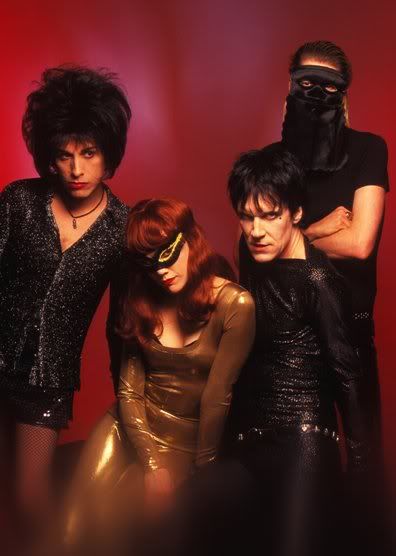Huffingtonpost.com
Feb. 4, 2009
http://www.huffingtonpost.com/kim-morgan/for-the-love-lux-interior_b_164121.html
13 Reasons "She Said" The Cramps
2. Poison Ivy remains one of my rock goddess Idols. The quintessence of too-cool-for-school, she'd stalk across the stage like a disinterested kitty cat -- slinky, sexy, unapproachable, perfect.
3. The Cramps blasted rockabilly out of the tired retro affectations of the perfectly coiffed, Eisenhower youth, rock-and-roll-at-the-hop-hop-hop-hop tedium. They knew Link Wray was a bad-ass. They worshipped crazy man Hasil Adkins. They dug the Sonics, Screamin' Jay Hawkins, The Ventures and they brought bump and grind to Jimmie Rogers. Fuck Fonzie. Long live Lux.
4. Poison Ivy got me into her idol, Bo Diddley's brilliant The Duchess. I bow down to her for this.
5. I didn't need to take drugs or get drunk to get high at a Cramps show (though that's fun too). They were also the perfect first date show. My longest relationship (now kaput) was aided by The Cramps (with Famous Monsters). A night of a new kind of kick indeed.

6. For some reason, The Cramps always make me think of what Christmas should really be like. I always wanted to spend Christmas with The Cramps.
8. Lux and Ivy actually make marriage seem like a good idea. They were the surprisingly clean living Charles and Morticia Adams of rock.
9. "Bend over, I'll drive, bend over I'll drive. Is this the way Ernie Kovacs died? Bend over, I'll drive."
11. Garage Punk, Psychobilly, whatever-the-hell. They were The Cramps.
12. The Cramps make you believe that sexy almost always has to be sleazy.
13. Lux Interior was Louis Prima to Poison Ivy's Keely Smith. He was speed to her heroin. The living to her dead. They were sickness, health, young and old. He's can't possibly be gone.






















